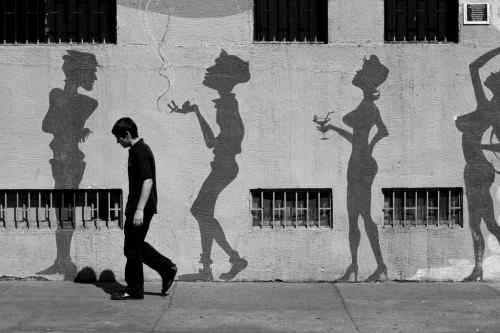Do you ever feel like you just don’t have the energy to get up and move? You’re not alone. Many people suffer from a lack of motivation, especially when it comes to exercise. This is often called “walking depression.” It can be hard to get started, but once you do, you’ll likely find that the benefits outweigh the initial struggle. In this blog post, we’ll discuss how to get moving when you don’t feel like it and some of the benefits of walking for depression.
Contents
What Is Walking Depression?
 Walking depression means various illness that involves various degrees of depression that make it hard for a person to get out of bed and start their day.
Walking depression means various illness that involves various degrees of depression that make it hard for a person to get out of bed and start their day.
The term “walking depression” refers to a type of depressive sickness characterized by many of the typical symptoms of sadness, such as a gloomy disposition, lack of interest in many activities, and feelings that might include hopelessness, worthlessness, and guilt.
Walking depression, like major depressive disorder, has a huge influence on your general well-being. It can have an impact on your mental health and self-esteem, making you feel like you’re worthless even though others may think you look confident and mentally healthy.
What Are The Signs And Symptoms?
Some various signs and symptoms indicate walking depression, let’s discuss each type in detail.
- Difficulty concentrating: It is hard to focus on any task, big or small. Every day feels like a mental battle. This can make work and school very difficult to complete.
- Irritability: You tend to get irritated easily. Depression can cause irritability whether you feel “down” or not. It’s possible that if you’re more prone to outbursts than usual, it’s a symptom of walking depression.
- Anhedonia: Anhedonia is the inability to experience pleasure. If you used to love going for walks, but now find them unenjoyable or even painful, it’s a sign that something is wrong.
- Fatigue and Low Energy: Walking depression can make you feel exhausted all the time, even if you get a full night’s sleep. It can be hard to muster up the energy to do anything, let alone go for a walk.
- Loss of Interest: You’re just not interested in anything anymore. Everything feels pointless. If you’ve lost interest in activities you used to love, it’s a sign that something is wrong.
- Feelings of Guilt: If you find yourself frequently feeling guilty or as though you can’t do things that you used to enjoy, this might be a sign of depression.
- Sleep changes: Depression can cause changes in sleep patterns. You might have difficulty falling asleep, wake up frequently during the night, or sleep more than usual.
- Appetite changes: It’s common for people with depression to lose their appetite or overeat. If you’re not eating as much as you used to, or if you’re eating more than usual, it could be a sign of walking depression.
- Aches and pains: This type of depression can cause physical aches and pains that don’t have any other explanation. You might feel pain all over your body, or you might have headaches or stomachaches.
- Negative thoughts: If you’re constantly thinking negative thoughts, it’s a sign that something is wrong. You might feel like you’re not good enough, or that you’re a failure. You might also feel like the world is against you.
Overall these are just some of the signs and symptoms that could possibly mean you are going through a walking depression. If you are experiencing any of these, please see a doctor or mental health professional.
Remember: You’re never alone in this. Recovery is attainable if you ask for help from those who know how to give it their best.
What Causes Walking Depression?

Various causes of walking depression include genetic factors, psychological factors, and social factors. However, they have identified several health and lifestyle factors that may put you more at risk for depression. Lets discuss each one of them:
Genetic Factors
You may be at greater risk for developing walking depression if you have a family member who has the condition. This may be due to shared genes or environmental factors that are common in families.
Psychological Factors
Certain personality traits, such as low self-esteem and perfectionism, may make you more susceptible to walking depression. In addition, previous trauma or stressful life events can increase your risk.
Social Factors
If you have to lack social support, you may be more likely to experience walking depression. This is because isolation and loneliness can trigger or worsen depressive symptoms. In addition, certain jobs or living situations may put you at greater risk. For example, if you work in a high-stress job or live in an unsafe neighborhood, you may be more likely to develop walking depression.
Risk factors
Some risk factors may put someone at a higher risk for developing walking depression. These include:
- Having a history of depression or another mood disorder
- Having medical conditions that can worsen symptoms of depression
- Taking certain medications that can cause depressive side effects
- Unemployment or underemployment
- Poverty
- Living in a high-crime area
- Exposure to violence
So these are some of the risk factors that could lead to walking depression. You should always consult with a doctor if you think you may be suffering from depression. But there are also some things that you can do on your own to help ease the symptoms of walking depression. Keep reading on!
How To Get Moving When You Don’t Feel Like It?
If you’re struggling with walking depression, it’s important to find ways to get yourself moving. Here are a few tips:
- Start small: If you can’t seem to muster the energy for a full workout, start with something small, like a ten-minute walk around the block.
- Set goals: Having specific goals in mind can help you stay motivated. Whether it’s walking for thirty minutes three times a week or losing five pounds, setting achievable goals will give you something to work towards.
- Find a buddy: Walking with a friend or family member can help you stay on track. Not only will you have someone to hold you accountable, but you’ll also have a built-in company.
- Join a class: If you’re struggling to keep up with an exercise routine on your own, consider joining a class. This can give you the structure and support you need to stick with it.
- Reduce stress: Walking can help reduce stress and tension.
- Improve mood: Walking releases endorphins, which have mood-boosting effects.
- Eating a healthy diet: Eating a balanced diet can help improve your mood and energy levels.
- Exercise: Can help reduce stress, improve mood, and increase energy levels.
- Getting enough sleep: Getting enough sleep is important for overall health and well-being.
- Spending time with loved ones and friends: Spending time with people who care about you can help improve your mood.
There are many benefits to walking, both mental and physical. Walking can help to improve your mood, increase your energy levels, and reduce stress. It can also help to improve your cardiovascular health and strengthen your muscles.
How To Treat Walking Depression?

Walking has some benefits for people suffering from depression. In addition to providing physical activity, which is essential for overall health, walking can also. If you think you have walking depression, the first step is always to talk with a licensed mental health provider so they can help treat your symptoms.
Medication: Antidepressants are drugs that ease depression by raising the levels of neurotransmitters. These natural chemicals found in the brain help to regulate moods and behavior.
Psychotherapy: A popular type of therapy for sadness is psychotherapy, also known as talk therapy. Examples of psychotherapy techniques used to treat depression include CBT, problem-solving therapy (PST), and interpersonal therapy.
It is important to remember that it takes time to feel better, and you should never try to self-medicate without first talking with your doctor. Walking has also been found to be an effective treatment for mild to moderate depression and releases endorphins, which are hormones that have mood-boosting properties.
It can also helps to improve sleep, increase energy levels, and reduce stress. Start by taking a short walk around the block and gradually increase the length and intensity of your walks as you feel able. So get started with your journey
Conclusion
It may be concluded walking depression is a real thing and it is something that you can do to ease your depression. Walking has some benefits for people suffering from depression. In addition to providing physical activity, which is essential for overall health, walking can also help reduce stress, improve mood, increase energy levels, and improve sleep. Therefore, do not hesitate to give it a try!
If you or someone you know is looking for psychological help, Therapy Mantra is here for you. We are the leading providers of online therapy and counseling. Our team of highly trained and experienced therapists can assist at the most affordable rates. Contact us today to learn more about our services. You may also visit our website to book an online therapy session or download our free Android or iOS app for more information.


